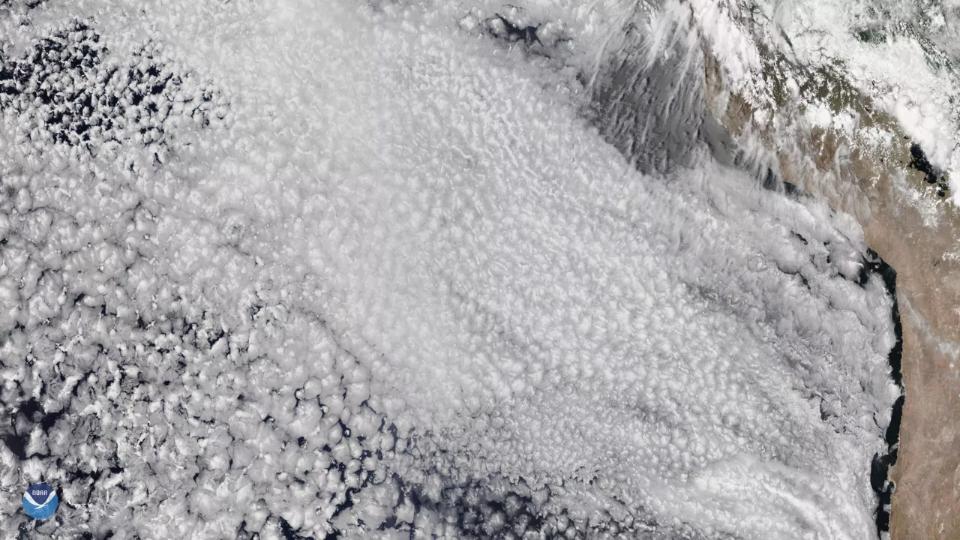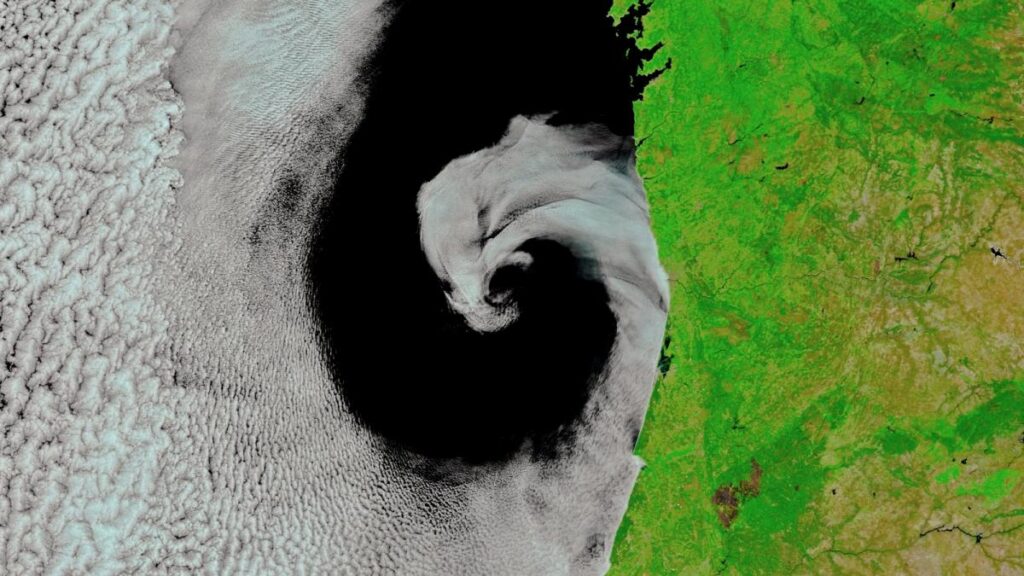quick Facts
Where is it? The west coast of the Iberian Peninsula (Spain and Portugal).
What is in the photo? A spiral cloud front hugging the coastline.
What took the photo? NASA’s Terra satellite.
When was it taken? July 16, 2017.
This striking photo shows an unusual spiral of clouds perfectly nestled along the west coast of the Iberian Peninsula in 2017.
The spiral consists of moist, cloudy air from the sea that is swirled together with clear, dry air from land by a phenomenon known as cyclonic rotation – the same mechanism responsible for generating tropical storms such as hurricanes, typhoons and cyclonesaccording to NASA’s Earth Observatory.
However, in this case, the rotation was much slower and weaker than the rotation during tropical storms, so the cloudy and dry air did not fully mix, preventing a good vortex from forming. This also ensured that no clouds passed over the land. (The image has been slightly edited to add more infrared light, to accentuate the difference between the land and the cloud.)
“What exactly caused this (unusual) mid-latitude rotation remains a bit of a mystery,” Stephen Joseph Munchak, a meteorologist from NASA’s Mesoscale Atmospheric Processes Laboratory told NASA’s Earth Observatory. However, it could have been caused by an eddy: a temporary, swirling current of water that extends deep beneath the ocean’s surface, he added.
An extreme heat wave traveled through Southern Europe in July 2017 also caused a generally large temperature difference between the cloudy sea air and the dry land air. This may have further prevented the two fronts from mixing, creating the stunning spiral shape. When this photo was taken, temperatures in Spain and Portugal were above 104 degrees Fahrenheit (40 degrees Celsius), according to NASA’s Earth Observatory.
Related: 12 fantastic images of Earth from space


The clouds in the spiral are marine stratocumulus clouds – ordinary low-altitude clouds that usually stay below 6,000 feet (1,830 meters) and can cover up to 6.5% of the Earth’s surface at any time, according to the National Oceanic and Atmospheric Administration (NOAA).
Interestingly enough, according to NOAA, marine stratocumulus clouds normally only appear along the west coast of Earth’s landmasses. This is because they are formed when cold water from the deep sea is brought to the surface by the Earth’s rotation – also known as the Coriolis effect – which cools the air above and allows water vapor to condense into clouds. Along eastern coastlines, the Coriolis effect does not push cold water toward the coast, meaning it does not rise to the surface.
MORE EARTH FROM SPACE
—Rare phenomenon turns African thunderstorm into giant ethereal ‘jellyfish’
—Ethereal algae vortex blooms in the heart of the Baltics’ vast ‘dead zone’
—Mysterious wave ripples over ‘galaxy’ of icebergs in Arctic fjord
The swirling clouds in the image stretched for hundreds of miles and likely persisted for several days. However, according to NASA’s Earth Observatory, it is unlikely that any fallout was released.
Similar cloud cyclones have appeared off the Iberian coast and the west coast of Morocco in the past, but according to NASA’s Earth Observatory, they are not normally as defined as the spiral in this photo.







